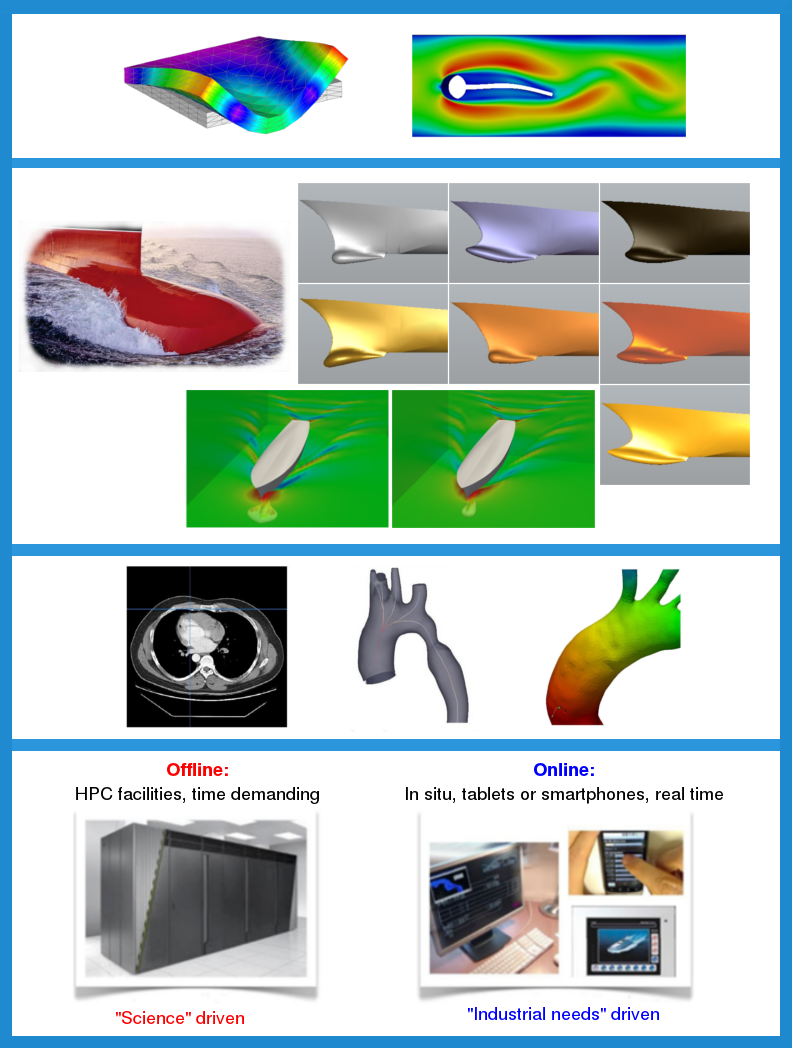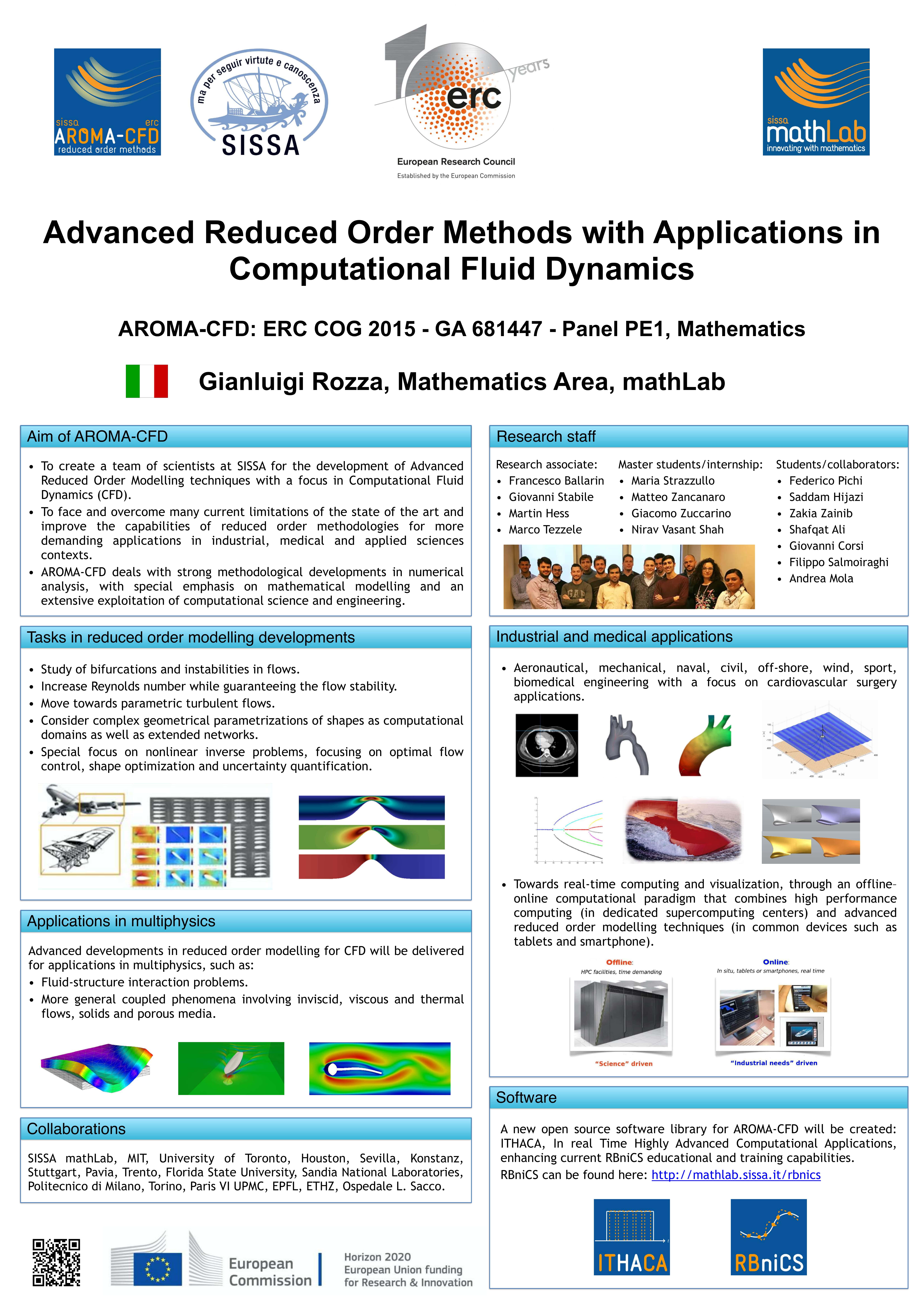Our research: aims and goals
The aim of AROMA-CFD is to create a team of scientists at SISSA for the development of Advanced Reduced Order Modelling techniques with a focus in Computational Fluid Dynamics (CFD), in order to face and overcome many current limitations of the state of the art and improve the capabilities of reduced order methodologies for more demanding applications in industrial, medical and applied sciences contexts. AROMA-CFD deals with strong methodological developments in numerical analysis, with special emphasis on mathematical modelling and an extensive exploitation of computational science and engineering. Several tasks have been identified to tackle fascinating problems and open questions in reduced order modelling: study of bifurcations and instabilities in flows, increasing Reynolds number while guaranteeing the flow stability, moving towards turbulent flows, considering complex geometrical parametrizations of shapes as computational domains into extended networks. A reduced computational and geometrical framework will be developed for nonlinear inverse problems, focusing on optimal flow control, shape optimization and uncertainty quantification. Further, these advanced developments in reduced order modelling for CFD will be delivered for applications in multiphysics, such as fluid-structure interaction problems, and more general coupled phenomena involving inviscid, viscous and thermal flows, solids and porous media. The framework developed within AROMA-CFD will provide attractive capabilities for several industrial and medical applications (e.g. aeronautical, mechanical, naval, off-shore, wind, sport, biomedical engineering and cardiovascular surgery as well), combining high performance computing (in dedicated supercomputing centers) and advanced reduced order modelling (in common devices), to guarantee real time computing and visualization. A new open source software library for AROMA-CFD will be created: ITHACA, In real Time Highly Advanced Computational Applications, enhancing current RBniCS educational and training capabilities, and providing a tool for real world applications.
Below there is a graphical abstract of the project AROMA-CFD: CFD and multi-physics, industrial geometrical parametrization, biomedical geometrical reconstruction, numerical simulation, optimization and control. The offline-online computational paradigm (HPC and small devices) is presented.

